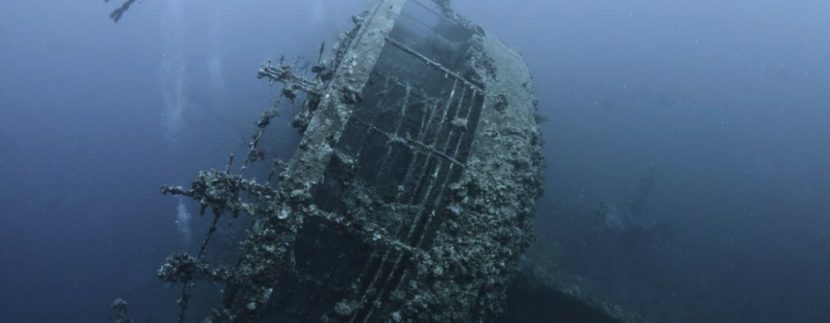Scuba diving in Spain: Ship wrecks of Cabo de Palos

The region of Murcia and in particular the ancient town of Cartagena and surrounding coastal towns such as cabo de palos has seen many ships sail these waters for well over a 2000 years.
During this period there has been many ships sunk due to storms, hitting offshore reefs, and in battles from as early as the roman and Carthaginian battles to WW1 and WW2. Due to the area’s history we have many different and exciting wrecks , some are still very much intact to the occasional object being found such as an ancient anchor or amphora’s being overturned in a storm that have been lying hidden for hundreds if not thousands of years. There was recently a Phoenician wreckfrom 600BC discovered in a small reef called La Laja and la campana north east off of isla grosa island .Due to its age there was not much of the boat remaining as it was made mostly of wood,but there is plenty of pottery and spear heads found which lead to a more extensive excavation which was productive and 2 elephant tusks were recovered that
dated back nearly2,500 years.
This makes diving much more fun and interesting in this area as you never know what you could find under the surface.
Some of the wrecks that are regularly dived are the(lsla Gomera) which sank in a violent storm in 1946 just out of the port of cabo de palos. It was carrying a cargo of oranges which lead to the ship being nicknamed the “Naranjito” which divers will be more familiar with. The wreck is 50 metres long and lies at a depth of 28m at the bow and 43m to the propeller.
The Turia and Ulla which are wooden minesweepers were sunk by the navy between Isla Grosa and Cabo de Palos for training purposes and lie in approximately 28 to 35m deep.
El vapour or “Sama” which is an old wreck at 50 meters deep and has not been explored much due to the depth and is broken down and flattened due to its age but has many large nudibranches (hypseldoris picta) living on it.
A off shore reef called Bajo de Fuerawithin the “Islas Hormigas marine park” has been a fatal shipping trap due to its distance from shore and being outside of the Islas Hormigas islands lighthouse and a huge reef system that peaks at just 3 metres below has a known 4 ship wrecks lying at the base of the reef. One was the famous Sirio passenger liner which hit the reef in 1908 and was carrying approximately 1000 immigrants from Italy when it struck the shallow reef and grounded for days until a storm broke the ship in two, the bow section slipping to the south side of the reef and the stern slipping into the north.
Other ships are the Minerva wreck that lies upside down. The Nord America which has an anti-aircraft gun on the stern section at 61 metres, also The Casenga, but all lie at 48 meters and deeper so just out of the reach of a recreational diver and more of a technical dive.
In Bajo de Testa, the closest dive site within the marine park has 4 known anchors from various ships and some of these date back over 1000 years old, I Myself discovered one small one while making a safety stop at 5 metres as I saw a rough outline of what looked like a small anchor on the reefs top. This site also holds many artefacts which would be hidden in the fields of Neptune grass which is very dense but is highly protected and forbidden to remove any
artefacts.
Just on the north point of the Islas Hormigas marine park there is the wreck of the SS stanfield, this wreck is approximately 120m long and popular among technical divers due to its depth of 45m on top of the deck to 64 m at the propeller. The ship was torpedoed by a German U boat after it was captured and when it sank it hit the sea bed bow first splitting it open which makes it very interesting to dive and able to dive through the bow at 3 different levels.
There are also other various deep wrecks in the cabo de palos area which is out of the reach of normal recreational divers and some technical divers as they can
be in depths in excess of 100 metres. Some of which are the , Maria Dolores, “Dorris”, Despina, ss Alavi, Atlantic city, kansega, ss Wilmore just to mention some and we know that there will be many more lying in darkness just waiting for to be discovered and dived.
Port of Cartagena
The CBA wreck off Cartagena was a purposely sank by the navy almost 50 years ago and was a small fishing vessel and lies at a depth of 20m. In this site the navy also sank a harrier jet fuselage which is good for taking photos and
navigation skills.
Off the island of Escombreras at a depth of 40 metres lies amphora’s which were used in the roman and Carthaginian times to transport goods such and oil and wine. Due to it being submerged for centuries none of the boat remains, just the amphora’s which are highly protected by the authorities in Cartagena.

 Spanish
Spanish German
German Dutch
Dutch